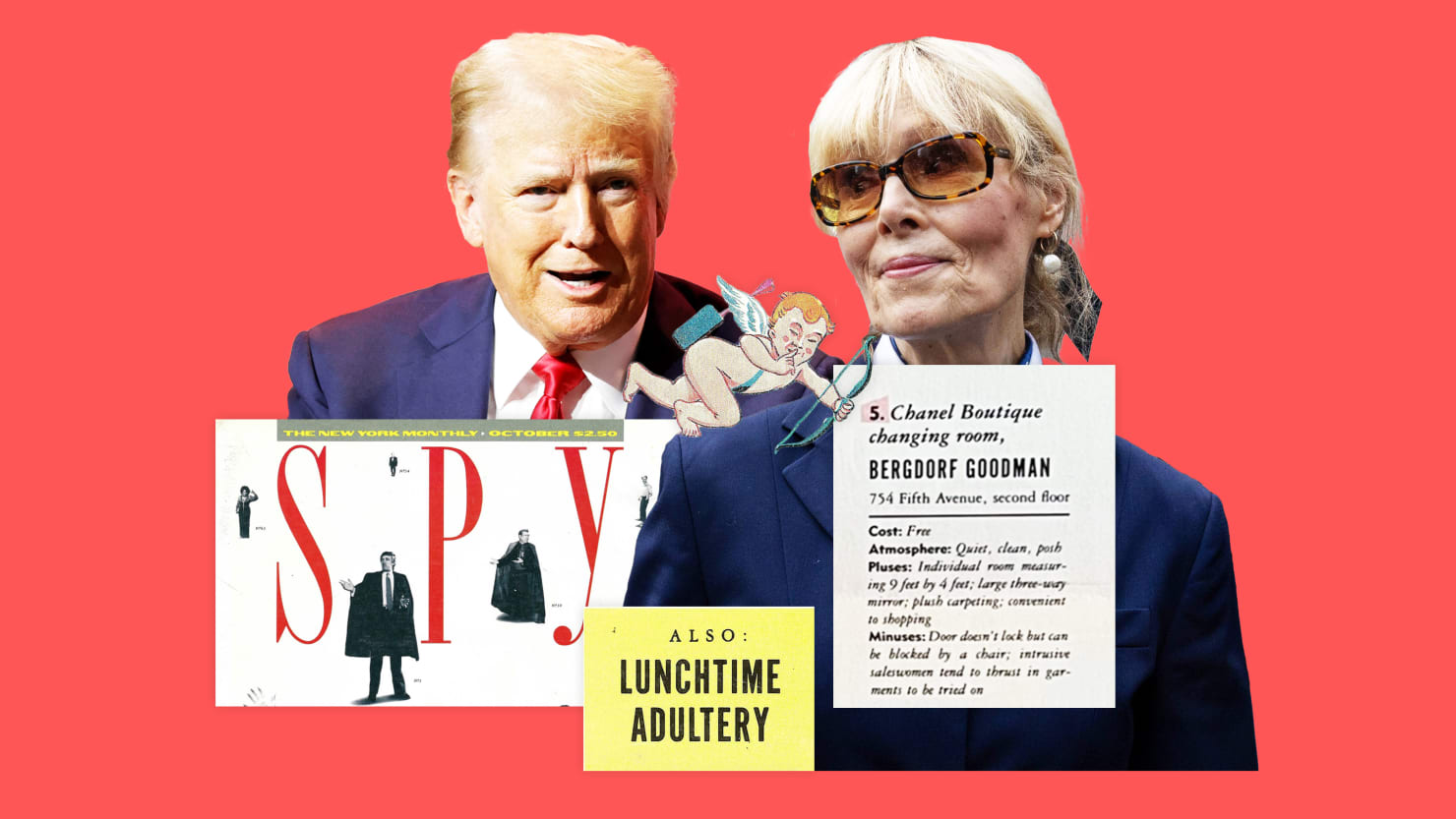Donald Trump’s refusal to acknowledge the harm he did to writer E. Jean Carroll is on brand for the former president and serial liar. At a press conference on Friday, Trump posed in front of the (fake) gold walls of Trump Tower while flanked by second-rate lawyers and proceeded to defame the woman who has already triumphed in two court cases against him.
First, he denied: “She made up a story, fabricated 100%, that I attacked her.”
Then he dodged: “I would have had no interest in meeting her in any way, shape or form.”
Then he deflected: “Her favorite show is Law & Order. There’s an almost exact story as her story in Law & Order about being attacked in the dressing room of a department store.”
It was odd to see Trump spewing that Law & Order narrative since it failed to sway the jury when then-Trump lawyer Joe Tacopina presented it in court. Instead, the jury voted unanimously to find Trump liable of sexual abuse and awarded Carroll $5 million in damages.
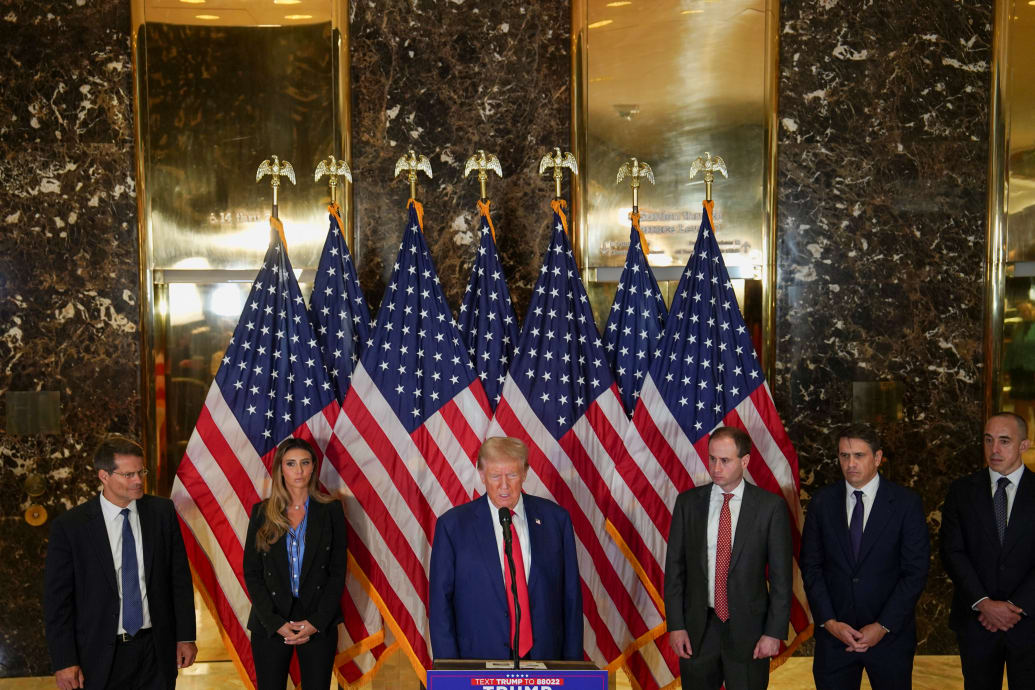
USA-ELECTION/TRUMP-NEW YORK
“Republican presidential nominee and former U.S. President Donald Trump, next to attorneys Alina Habba and Will Scharf, attends a press conference at Trump Tower in New York City, U.S., September 6, 2024. REUTERS/David Dee Delgado”
David Dee Delgado
Fresh from oral arguments to appeal that verdict, Trump returned to that talking point despite that theory containing a massive flaw. The episode that Trump insists triggered Carroll’s story aired 15 years after Carroll told people about Trump assaulting her. That’s not how time works. Still, as is often the case with Trump, every accusation is a confession. That may be true here, too, and maybe he’s the one who got the idea from an outside news source.
Trump has strenuously maintained that the notion that physical contact in “a crowded department store” like Bergdorf Goodman’s was beyond credulity. In fact, the idea was entirely plausible. And here’s proof.
Let’s rewind to the late 1980s when the “short-fingered vulgarian” devoured every word written about him, including the monthly mockery in Spy magazine, a short-lived satirical monthly founded by editors Graydon Carter and Kurt Anderson. In October 1987, I co-wrote the magazine’s centerfold: The SPY Map to Furtive Lunchtime Romance.
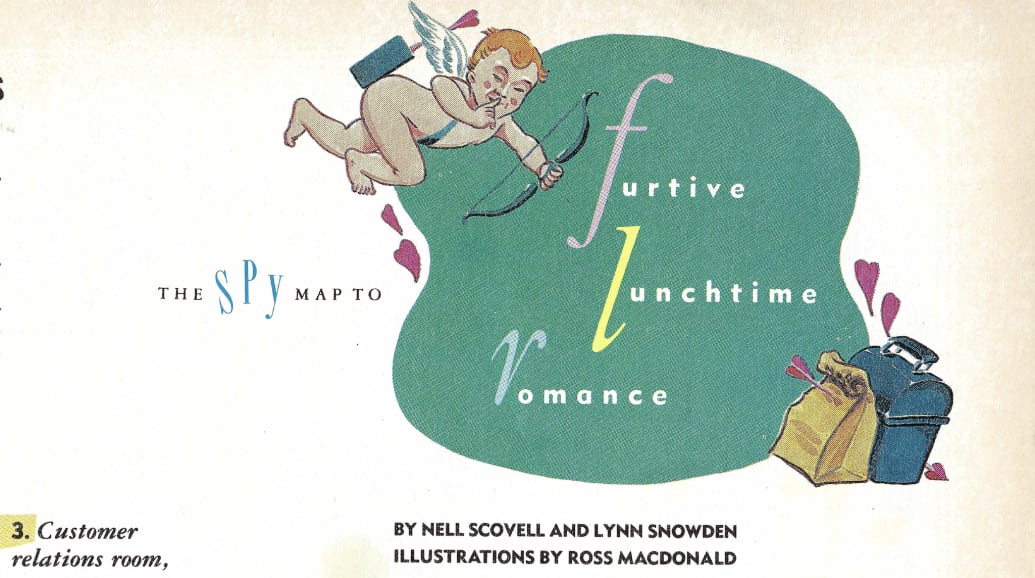
This is the 1987 feature which provides an eerie foreshadowing of Trump’s meeting with E. Jean Carroll which led to a jury ruling he sexually assaulted her.
Spy Magazine
The lede laid out the concept: “New Yorkers know where to go when they want to be seen—the Four Seasons, Mortimer’s, Le Cirque. But where do they go when they don’t want to be seen?”
The map provided a list of places where couples could drop in for a midtown quickie. These potential love nests included a closet at St. Thomas’s Church, a safe deposit box at a bank, and the Chanel Boutique changing room at BERGDORF GOODMAN.
I even recall scouting the various department stores that dotted Fifth Avenue back then—Bendel’s, Saks Fifth Avenue, Takashimaya—before determining that Bergdorf’s offered the most discretion. And if a changing room on the second floor offered plenty of privacy, then one on the sixth floor would have been even more private.
Finally, contrary to Trump’s repeated claims that it never could have happened in a dressing room because the doors “are LOCKED,” there, in print, that claim was debunked.
There’s no way to know if Trump read this map, but the possibility increases given the item that followed Bergdorf’s on the map actually included the name Trump.
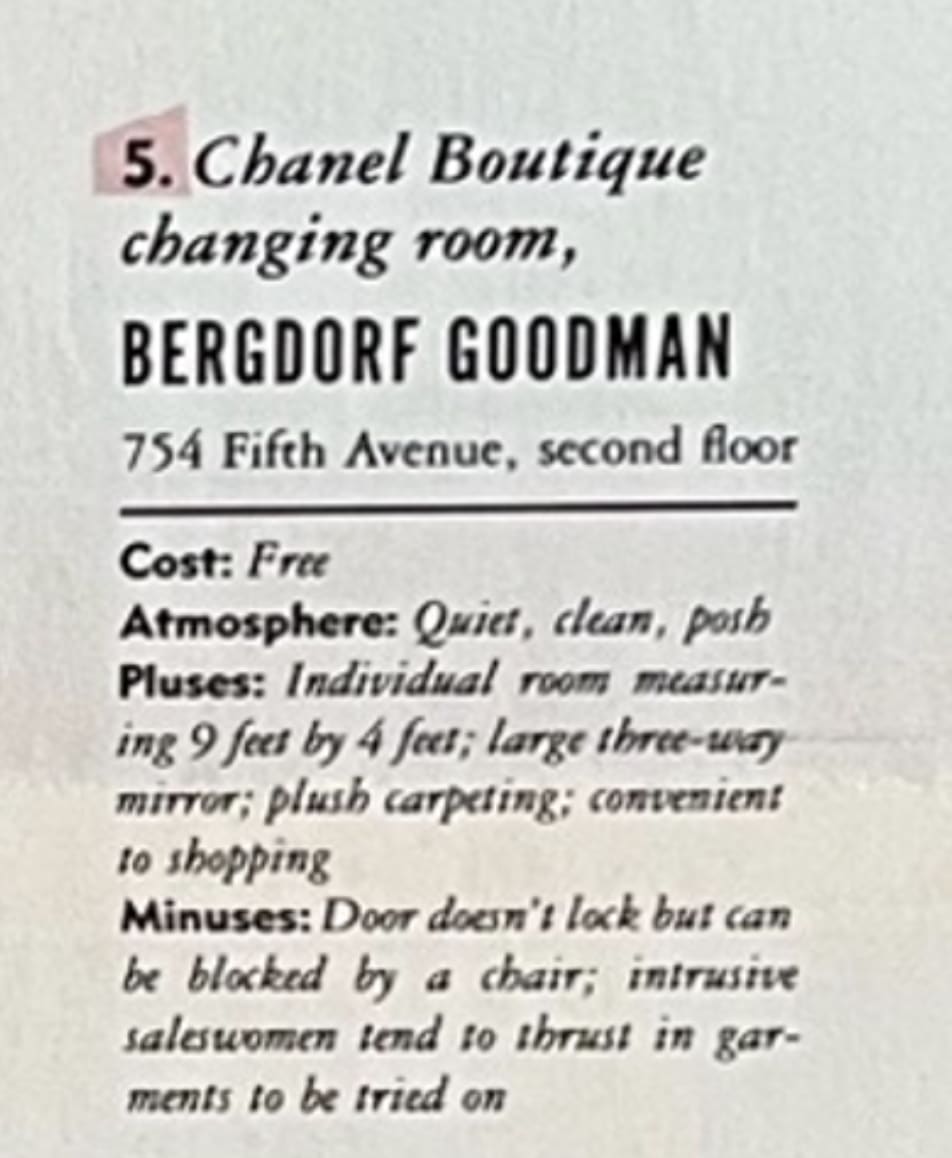
This was the innocent guide to New York venues suitable for illicit encounters which may provide a clue to what Trump was thinking when he, according to a federal civil jury, sexually assaulted E. Jean Carroll on the sixth floor of Bergdorf Goodman.
Spy Magazine
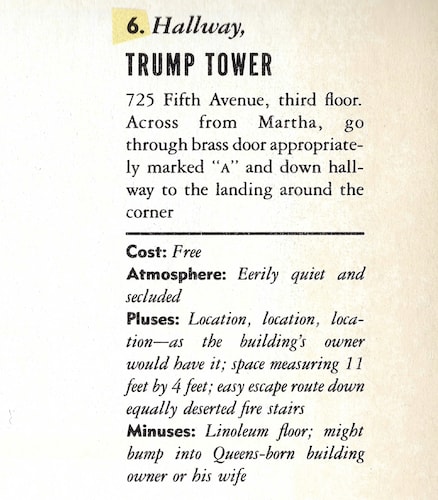
Directly beneath Bergdorf Goodman in the Spy guide was Trump Tower, linoleum floors and all.
Spy magazine
To be clear, the article assumed that any couple seeking a sexual encounter in a midtown department store dressing room would be acting consensually. Leave it to Trump to turn a fun activity into something so offensive and harmful that a jury determined he broke civil code. That’s also on brand for Trump.
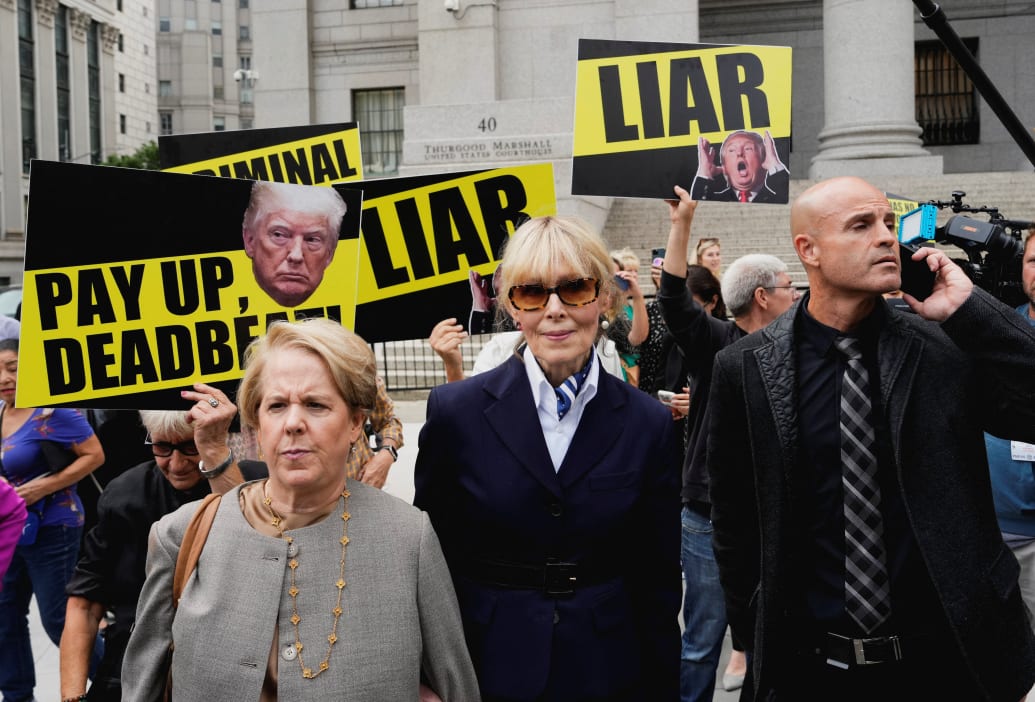
Carroll (center) sued Trump won a ruling that he had sexually assaulted her in a Bergdorf Goodman changing room in a case pushed by attorney Roberta Kaplan (left).
Adam Gray/Reuters
There was one other mention of Trump in that issue of the magazine and therefore one more reason to believe he read it. The cover story featured “The SPY 100,” the magazine’s annual roundup of the “Most Annoying, Alarming and Appalling People, Places and Things in New York and the Nation.” Trump came in third behind corporate raider Ivan Boesky and Ronald Reagan.
The previous year, Trump had actually secured the #1 spot for most annoying. But the next year, he dropped to third place, in part because under mitigating factors, Spy presciently noted, he “didn’t run for office.”
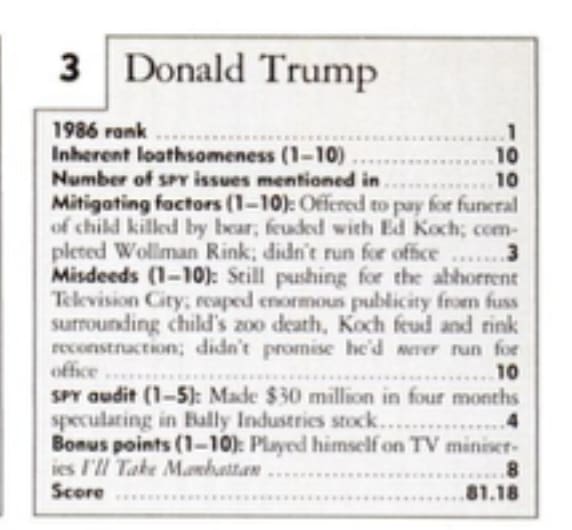
Think Donald Trump didn’t read hate Spy magazine? He was in the same edition as the guide to quickies.
Spy Magazine




![Tyson Foods Plant [Photo: Food Manufacturing]](https://southarkansassun.com/wp-content/uploads/2023/08/iStock_1185520857__1_.5e441daa51cca-600x337.jpg)







![Silverado Senior Living Management Inc. [Photo: Los Angeles Times]](https://southarkansassun.com/wp-content/uploads/2023/10/download-6-4-600x337.jpg)

![China's Wuhan Institute of Virology [Photo: Nature]](https://southarkansassun.com/wp-content/uploads/2023/09/d41586-021-01529-3_19239608-600x337.jpg)
















